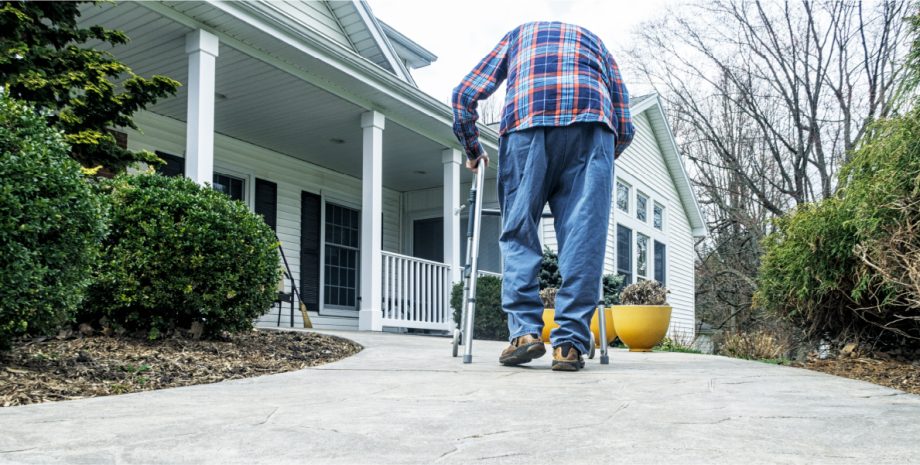

What comes to mind when you think of an accessible house? Maybe the unappealing bathrooms that you see adjacent to hospital rooms? Or maybe you imagine a regular home with some temporary fixes in place here and there? Many times, we don’t visualize a beautiful, welcoming environment where accessibility is built in right alongside aesthetics, but that’s exactly where adaptability is headed.
Welcome to 2022, where adaptability can also be stylish!
The world of adaptability is changing as many more Americans need help getting around their homes. As people age, even one fall can lead to a world of trouble when it comes to mobility. On top of that, the number of chronic illnesses that cause mobility to decrease are on the rise. With people wishing to remain more independent later in life, the desire to make homes accessible for all has become a recipe for innovation.
While seeing your own mobility decrease due to injury or an illness is quite difficult, having a home that supports you in living the life you want can only make things easier. For wheelchair users and others with long-term decreased mobility, taking advantage of new technologies and design elements can breathe new life into the way you get around your home.
Some helpful things to consider
There are several common changes that can make homes more accessible, especially for those using walkers, wheelchairs, or other assistive devices. When you are thinking about renovating a bathroom or other room of your home (or even your whole home), these are some of the top things you will want to consider:
- Wide doorways
- Knee space under tables, sinks, or counters
- Ramps and railings
- Grab bars at the toilet, shower, tub and elsewhere
- Curbless showers for easy entry or converting a bathtub to a walk-in shower
- Raised toilet seats
- Smooth thresholds between rooms
- Lowering shelves and storage areas
- Sensor lights in hallways
It’s also important to keep in mind that any aesthetic changes you make to your home will need to be safe for someone who has decreased mobility. For example, high pile carpets can be a disaster for someone with a walker or other device. A modern style with minimal clutter is ideal. Some other things that add a nice touch for someone looking for more accessibility include:
- Lever handles (instead of traditional door knobs)
- Side by side refrigerators
- Touch control kitchen appliances
- Motorized curtains or blinds
- Seating and storage in the bedroom, including a place to relax while removing prosthetics, putting on shoes, etc.
- Landscaping that creates an easy path to make the outdoors accessible
It’s YOUR home!
After a long day of navigating public spaces that may or may not be built for them, those with mobility issues want to come home to a welcoming space that feels easy and secure. Designing a home that suits everyone in it is key to creating this experience. There are many ways to create intentional spaces, and the process begins with considering the needs of the people using them.
Looking for a place to start? CICOA offers a downloadable checklist to help you assess your home’s safety. Hancock Regional Hospital offers a wide array of home medical equipment to help individuals maintain independence in their homes.
Because every disability, injury, and illness is different, each requires different accommodations. People with decreased vision can benefit from a clutter-free environment that prevents accidents, and contrasting colors that aid visibility and safety.Individuals using wheelchairs will need wider doorways, as well as ramps and easier ways to get in and out of rooms. This may mean installing pocket doors, “barn doors,” or doing away with doors altogether. Those with conditions such as multiple sclerosis, which decreases mobility over time, may need to plan adaptable elements around the needs of their future selves.
Still, improving a home’s accessibility doesn’t have to mean sacrificing beauty and comfort. Innovative designers are changing the way we think about adaptability. Use the ideas we’ve mentioned above as thought starters, then use your own creativity to create a barrier-free sanctuary that’s attractive, welcoming, and truly secure.
Relevant Services
Long-Term Care
Hancock Health provides long-term care services in partnership with AMG Specialty Hospital.
Home Care
Hancock Health partners with Suburban Home Health to provide at-home care for patients.